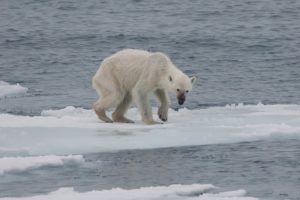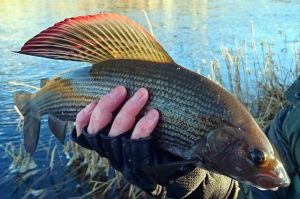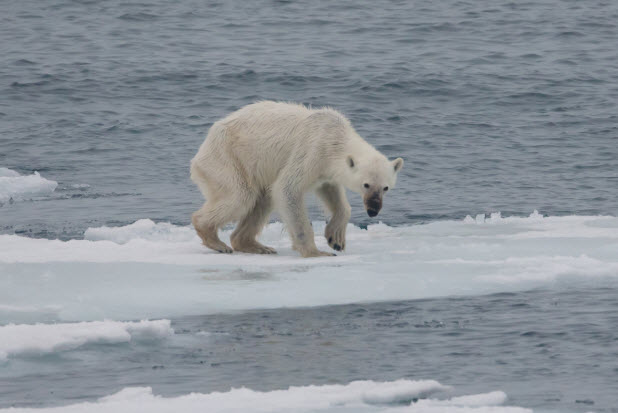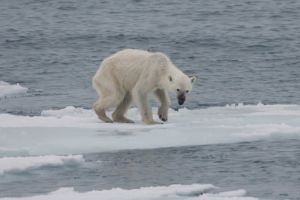Ewe Few: According to Fish Farming Expert, Mowi have now confirmed the closure of the salmon farm in Loch Ewe. This will take place at the end of the current production cycle in 2020. The company wants to move its farming sites away from enclosed lochs to those in a more open water environment. The wild salmon lobby have always maintained that the farm was too close to sensitive wild salmonid habitats.
In response to the announcement, anti-salmon farm critic Don Staniford tweeted ‘Why not just close all your farms to avoid impacts on wild salmon and be done with it’. We would suggest that Mr Staniford is simply repeating an age-old mantra that is simply not supported by the evidence. Unfortunately, the wild fish lobby refuse to discuss the issue because it will undermine their claims that salmon farms damage wild salmonid stocks.
In the case of Loch Ewe, the evidence is incontrovertible. The River Ewe has been classified as a Grade One river which means that anglers can kill all the salmon they catch subject to local rules. The River Ewe therefore has the same classification as the great east coast rivers such as the Tweed, Spey and Tay despite being located so close to a salmon farm. In fact, over the last decade, this small river has provided over 200 salmon for anglers to kill and take home. A further 2,174 salmon were put back. This is not a bad catch given that the river Ewe is a very short river and is situated so close to the salmon farm. Numbers have tailed off in the past couple of years, but they have in the majority of other rivers in Scotland.
In his attempt to throw any dirt he can at the salmon farming industry, Mr Staniford has retweeted an article from CNN. They report sightings of emaciated grizzly bears around the Knight Inlet in British Columbia. CNN say that Fisheries and Oceans Canada has noted that Canada’s climate is warming twice as fast as the global average, drastically impacting the salmon’s ecosystems. They also say that marine heatwaves, increased floods and droughts are causing greater stress on the fish. Consequently, salmon, the bear’s main food source, are at an all-time low.
CNN also spoke to so-called ‘biologist’ Alexandra Morton who said that everywhere in the world where there is salmon farming there is a decline in wild salmon population. She said that open-pen salmon farming exposes the wild salmon population to viruses. However, what she doesn’t say is that everywhere in the world that there are wild salmon there is a decline in wild salmon population. Inevitably, this means that there will be a decline in wild salmon where salmon farming takes place but because she is so convinced that the declines are linked to salmon farming, she ignores the declines elsewhere as do other critics like Mr Staniford.
What such critics fail to appreciate is that there are big changes occurring to our planet. The images of emaciated grizzlies are not the first such images of bears that have been published. In recent years, more pictures of emaciated polar bears have emerged. They show bears in a very similar state to the Canadian grizzlies but clearly, their predicament has nothing to do with salmon farming.

The problem for wild salmon that Alexandra Morton creates is that by focusing on salmon farming as the alleged cause of the declines, she is deflecting attention away from consideration of the real reasons why wild salmon are in trouble. This can be seen by the enforced closure programme of salmon farms around the Broughton Archipelago. As we have previously mentioned the inevitable consequence of this strategy is that British Columbia will not only end up with no farmed salmon, but it will have no wild salmon too. Removing salmon farming is simply not going to aid the recovery of fish stocks.
The same view can be held about the removal of the salmon farm in Loch Ewe. When this is removed, Loch Maree will not return to be a premier sea trout fishery simply because sea trout stocks continue to decline across all of Scotland, so a major recovery is never going to happen in Loch Maree.
The reality is that salmon and sea trout stocks are not declining in isolation. Wildlife across the UK is under threat. A recently published ‘State of Nature’ report highlights that two-fifths of species have declined in Britain over the last fifty years. The Times newspaper highlights several species that are suffering more than others and one especially caught our eye. Stocks of grayling have declined by 68% since 1970.
The grayling is a salmonid because of the presence of an adipose fin. The fish has a very large sail like dorsal fin. Fishing for grayling takes over during the winter salmon close season, meaning only the hardiest anglers bother. In Scotland rivers such as the Annan and the Tweed are renowned grayling rivers but other rivers such as the Earn, the Tay, the Clyde, the Nith and the Ayr also produce good grayling. All these rivers are well away from salmon farms, yet UK stocks have fallen by nearly seventy percent. This is a massive decline but seemingly not a word of concern from any of the angling organisations. Could this because that unlike salmon, they have no-one else to blame?

Salmon conservation: The Daily Record has reported that the Scottish Government has refused planning consent for a new upland track to be built in Perthshire because of concerns that its construction could kill fish. The track was planned for the Glenalmond Estate to provide safe access to the central area of the estate. The area is currently difficult to access on foot or by vehicle. Last year, a shepherd had a serious accident on a quad bike.
The local planning authority sought advice from Scottish Natural Heritage because the planned works lie within the catchment of the River Tay Special Area of Conservation. SNH advised that potential siltation, particularly from sediment run-off as a result of the works, could harm vulnerable stocks of salmon. The planning authority were told that salmon need high quality water and the works could lead to a potential reduction in water quality. In addition, any siltation could smother gravel beds used for spawning. This work was therefore judged to have the potential to adversely affect the integrity of the River Tay SAC.
The River Tay Special Area of Conservation is one of several SAC’s in Scotland. The JNCC description of the River Tay designation states:
The River Tay supports a high-quality Atlantic salmon population with rod catch returns showing that the Tay is consistently one of the top three salmon rivers in Scotland. In 1999, the catch was 7230 fish, over 10% of the Scottish total. The Tay drains a very large catchment and has the greatest flow of all UK rivers. There is considerable ecological variety in the Tay catchment resulting in the Tay supporting a range of salmon life-history types found in Scotland, with adult salmon entering the River Tay throughout the year to spawn in different parts of the catchment.
We suspect that anyone reading this description may be puzzled by the contradiction that in 1999 7,230 salmon were caught and killed for sport in a river designated as an Area of Special Conservation! Common sense would suggest that everything within the SAC would be protected but whilst the SAC was specifically established for salmon, there is nothing in the protection to stop every salmon being caught and killed. This is because the SAC was established under the EU’s Habitats Directive and so it is the habitat that is protected not the fish. Hence, the Scottish Government can stop building work that might damage the habitat to prevent the fish from breeding, but it cannot stop the mass slaughter of the fish themselves. It is potentially possible because of the SAC that the river could be in absolutely pristine condition to provide the ideal environment for the fish to breed, but that there are no fish left in the river capable of utilising these pristine conditions.
In 1999, JNCC indicated that 7,230 salmon were caught in the Tay SAC, last year the number was 4,483. Clearly, there is a problem so perhaps it is time for conservation to actually mean conservation.
It is ludicrous to have a designated conservation area yet to allow the very animals that are supposed to be protected to be caught and killed for sport. If this was any other animal, there would be a public outcry yet because salmon are considered a sporting fish, the slaughter is allowed to continue.
Martin’s blog 6: Why is it that there are some who prefer to attack the messenger rather than address the message. Salmon & Trout Conservation’s media consultant Corin Smith has made disparaging remarks about me on his personal Face book page. I don’t expect anything less given his boss in S&TC wrote last year ‘Dr Crapper, so named because of the crap he writes’. To me it’s a real puzzle since if these people are so concerned about the plight of wild salmon and sea trout that they refuse point blank to sit down and discuss the issues with me. I may or may not have answers but if it were me, I would be exploring every possible option if it will help safeguard the future of these wild fish. Unfortunately, these people have a narrative and they don’t want to hear anything that might not fit in with it.
The latest comments came after someone wrote a comment on Mr Smith’s Facebook page suggesting that the east coast is free from salmon farms and therefore the collapse of stocks there has nothing to do salmon farming. I don’t know exactly what was said because it seems that Mr Smith subsequently blocked this individual removing all his comments. This is apparent from the comments of another contributor who wanted to respond to this individual. It seems that Mr Smith blocks anyone from his Facebook page who makes comments he doesn’t like but then I am blocked from S&TC Twitter feed, so it is clear they simply don’t like free and open debate.
Anyway, Mr Smith wrote in response ‘It is also nonsense to suggest that the East coast is some kind of control group unaffected by salmon farming. That’s just pseudo-science pushed by ‘paid for’ bloggers sitting in a small flat in Manchester.’
The reference to Manchester is clearly aimed at me although I don’t sit in a small flat and I am not paid to blog although any offers would be extremely welcome! When Mr Smith emerged onto the anti-salmon farming scene, he wrote something similar and I rang him to inform him that I am not paid by anyone to express any view and would he remove the comment from his page. He didn’t and still maintains the ‘paid for’ view. Even if it was paid for, which it isn’t, I don’t see the issue. Mr Smith works for S&TC and has been travelling around the country on behalf of Patagonia and it would seem unlikely that money has not changed hands. Whether the views are paid for or not makes no difference to the facts. People have to work to make a living.
Mr Smith calls my work pseudo-science, but it uses exactly the same methodology as the wild fish sector use as well as Marine Scotland Science. It seems that Mr Smith calls this pseudo-science simply because it doesn’t agree with his view. Mr Smith is a bit secretive about his background, but I don’t think he has a PhD in fish biology or nearly fifty years’ experience of working in the sector.
Mr Smith then makes some points to which I will respond:
‘All migrating wild salmon from Scotland are affected by salmon farming because salmon farming competes directly for their feed source’.
Is Mr Smith suggesting that the fish content of salmon feed is made from fish caught from the wild salmon’s feeding grounds because this is incorrect. Fishmeal comes from a wide range of sources and interestingly the catch has not increased over the years from levels that were harvested even before salmon farming was conceived. In fact, the fish content of fish feed has greatly reduced, and a significant amount comes from fish processing waste. I’ve written about fishmeal previously and even if salmon farming ceased, fish meal processing would continue, and the resulting feed would continue going to feed pigs, poultry and pets.
‘There is a lot of evidence that shows the migration of fish from east coast rivers could very easily be impacted by salmon farms in Shetland and on the west coast of Norway. Wild salmon do not migrate in straight lines.’
From 1970 until 2011, fish catches on the east coast had continually increased and no-one from the wild fish sector complained about fish swimming past Shetland and Norway, It is only since east coast catches started to decline over the last decade that it has been suggested that farms in Shetland and Norway could be the cause of the decline. If that were true why had catches not declined from the 1980s onwards when farms had been established. Alternatively, is Mr Smith suggesting that the migration route of salmon has changed since 2011 and it is only now that these northern farms are having an impact. I would be interested to see the evidence to support this view. Could it be that the suggestion that migration routes have changed is now being advanced because it is the only theory that supports Mr Smith’s view?
‘Clearly there is some relevance to look at other populations of wild Atlantic salmon outside the aquaculture zone, but it is of little scientific value’.
As we have already mentioned Mr Smith has said it is nonsense to suggest that the east coast is some kind of control group, so if a salmon farming free area is not a control group, what does Mr Smith suggest should be used as a control group. Science, whether pseudo or not needs a control against which to measure changes. I would agree that it is not ideal because the nature of the rivers along the east coast are very different to those on the west coast, but this comparison is the best there is. It is worth pointing out that RAFTS published a comparison of east and west coast rivers in 2011 and Salmon & Trout Conservation updated that data a couple of years later.
Mr Smith also refers to peer-review. Peer-review is not an exact science. It is not a guarantee that the conclusions are correct. Mr Smith says that there are many peer-reviewed papers showing that salmon farming has an impact on wild fish but none which say that salmon farming doesn’t have an effect. This is incorrect.
Firstly, it is worth pointing out that the disparity between papers showing the impacts of salmon farming and those that don’t are simply a reflection of where the money is going, not on whether salmon farms have an impact or not. There is research that shows that salmon farming has minimal impact on migrating wild fish but as soon as it was published, there was such a concerted attempt to discredit it that it is understandable that researchers are reluctant to get involved in this debate. In fact, I recently sought out an academic collaborator and as soon as aquaculture is mentioned, the doors are closed.
Mr Smith says that salmon farming should show that it is safe to operate. How is this possible when Mr Smith and his colleagues simply refuse to sit down with anyone who would like to do so?
Life is cruel: We do not condone the images released by a Vegan activist group of unacceptable handling of fish at a hatchery in the US. Their usual practice is to place their investigators inside farms to gather evidence of animal cruelty. We have no idea of the context of what happened at this farm but as their job is to gather evidence, we wonder how much these undercover investigators might encourage bad practice to help them gather evidence.
The reality is that food production is not nice even under the best practice. It can always be argued that animals feel pain and therefore any production method is unacceptable. For the majority of the public there is an acceptable balance between industrial food production and animal welfare. The simple fact is that with seven and half billion mouths to feed, we need to produce food in quantity and as we said often that is perceived by some to be not nice.
This group have targeted salmon farming as their first attack on the seafood industry. We, at Callander McDowell, are not surprised. It is just another attack on salmon farming, but other areas of seafood production are little different. It is not hard to find videos on the web of fish squashed together in trawl nets and dumped onto the deck to suffocate or of pole and line fishing, which is seen as sustainable, but is not always nice to watch.
Humans are just animals, but animals with the capability to think. Animals in the wild also can be cruel. There is a video of killer whales playing with a young seal by repeatedly tossing it in the air https://www.youtube.com/watch?v=O0qMT2YBIcg. There are many other examples. It is part of the process of survival.
We are also always puzzled by the animal loving public who criticise food production, but do nothing about the widespread cruelty imparted on domesticated pets. Last year, the RSPCA reported rescuing 102,900 animals. Surely, this is an even greater outrage.


